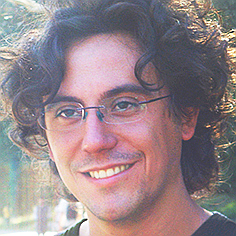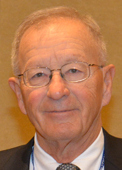Date/Time
Date(s) - 02/25/2017
12:00 pm - 5:00 pm
Location
NYMS Headquarters
Category(ies)
Free and open to the public
 Featured Presentation:
Featured Presentation:

Enrico Sassoni, PhD
EC Marie Skłodowska-Curie Fellow Dr Enrico Sassoni is a research Materials Engineer based in the Dept. of Civil, Chemical, Environmental and Materials Engineering (DICAM), University of Bologna, Italy, and just now completing 18 months collaboration with Dr G Sherer in the Dept. of Civil and Environmental Engineering (CEE), Princeton University, USA. In his three year project, Dr Sassoni and colleagues are investigating and developing rejuvenative and protective technologies for preservation of architecture and sculpture.

Dr Sassoni will share from his current work in materials engineering for mostly carbonaceous stones such as limestone and marble, including macro- , micro- and nano- structure and chemistry, and elegant and useful microscopical methods. See his abstract for February 25, last below, and a poster Sassoni recently presented in an international conference.
Free and open to the public. Doors open at noon. Light refreshments.
At about 1 PM, before our featured speaker, we’ll welcome American Microchemical Society President Bob Vetrecin’s informal presentation:

“Meet the American Microchemical Society”
Together with several NYMS Board members, Bob Vetrecin is very active in the Organizing Committee / Governing Board of the NYMS-sponsored Eastern Analytical Symposium.
Sassoni Abstract:
FOCUSED ION BEAM MICROSCOPY (FIB-SEM) PROVIDES NEW INSIGHTS ON INORGANIC TREATMENTS USED FOR CONSERVATION OF MARBLE ARTWORKS
Marble has been used in architecture and sculpture since antiquity. In spite of being apparently very durable, marble is highly sensitive to dissolution in rain because of the relatively high solubility of calcite in water. The protective products that are currently available are not fully satisfactory, so we are developing an innovative treatment based on hydroxyapatite (the mineral constituting our teeth and bones). The idea is that, by forming a layer of hydroxyapatite over marble surface, marble can be protected from dissolution in rain, thanks to the very solubility of hydroxyapatite. The hydroxyapatite layer can be formed by reacting marble with an aqueous phosphate solution. However, for a protective treatment to be effective, the newly formed coating needs to uniformly cover the substrate, to be crack-free and non-porous. While the coverage of marble surface and the possible presence of cracks can be assessed by traditional scanning electron microscopy (SEM), the evaluation of the coating porosity requires observation of cross sections as unaltered as possible. We used a focused ion beam (FIB) microscope to obtain cross sections of the hydroxyapatite layer, thus being able to assess the presence of pores and the adhesion between the coating and the substrate. This was the key to significantly improve our treatment, as we were able to prove that adding alcohol to the aqueous solution used to form hydroxyapatite allows a remarkable reduction in the layer porosity. Furthermore, we also assessed that marble surface roughness strongly influences the microstructure of the hydroxyapatite coating. Thanks to the indications obtained by FIB-SEM, we were able to develop a coating with improved protecting ability.
